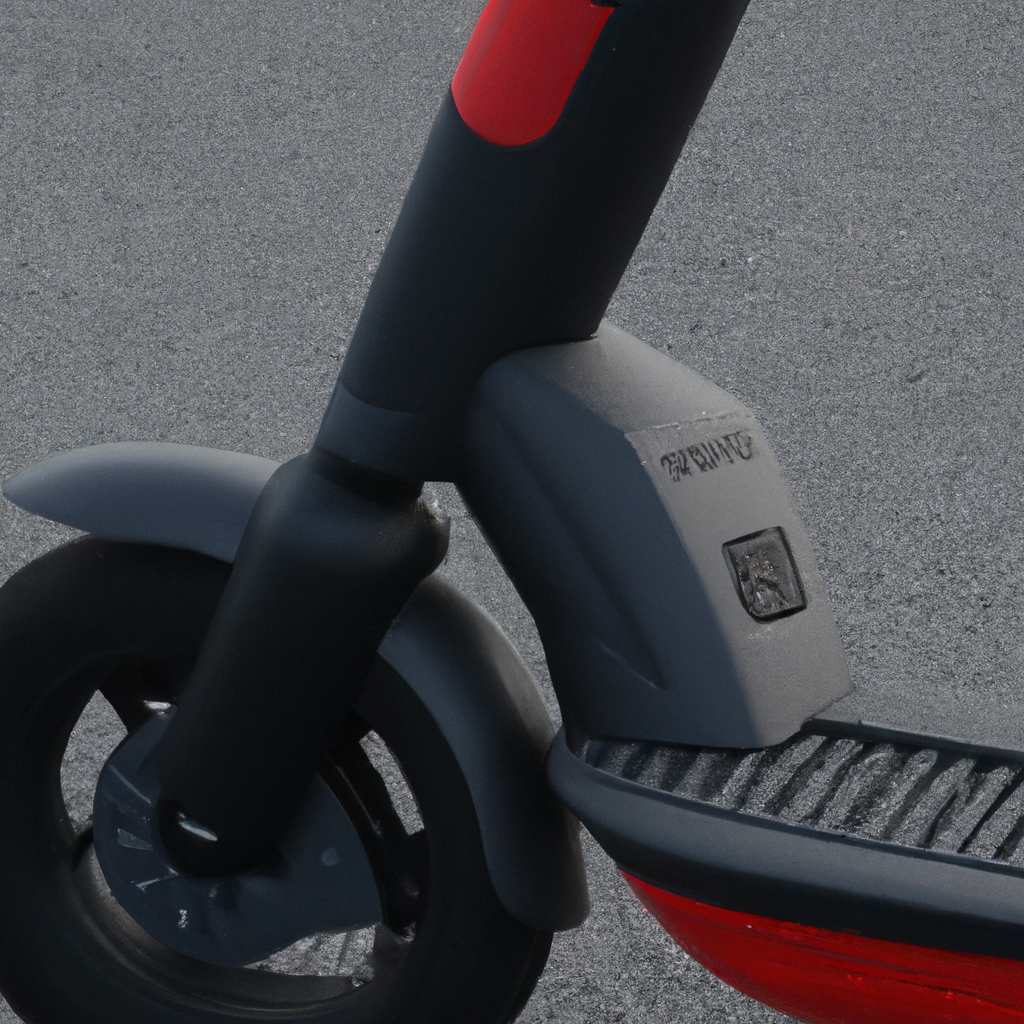Have you ever wondered just how noisy electric scooters are when they’re zipping down the street? Well, you’re in luck because we’re about to uncover the truth. In this article, we’ll explore the level of noise generated by electric scooters when they’re in operation. Whether you’re a curious bystander or a potential electric scooter owner, this information will give you a better understanding of the impact these vehicles have on noise pollution. So, sit back, relax, and let’s dive into the world of electric scooters and their noise levels!

Overview of Electric Scooters
Electric scooters have gained significant popularity in recent years as an eco-friendly and efficient mode of transportation. They offer a convenient and sustainable alternative to traditional gas-powered scooters, especially in urban areas with heavy traffic and limited parking options. One of the key advantages of electric scooters is their low noise emission, which makes them highly desirable for those seeking a quiet and comfortable ride.
Factors Affecting Noise Levels
Several factors can affect the noise levels produced by electric scooters. Understanding these factors can help users make informed decisions when choosing an electric scooter that meets their specific noise requirements.
Motor Power and Type
The power and type of motor used in electric scooters play a significant role in determining the noise levels. Generally, electric scooters equipped with hub motors tend to be quieter compared to those with belt-driven or chain-driven motors. Additionally, higher-powered motors may generate more noise due to increased vibrations and friction.
Wheel Design and Size
The design and size of the wheels on electric scooters also impact the noise levels. Larger wheels, particularly those with air-filled tires, tend to absorb more vibrations and produce less noise compared to smaller solid wheels. Additionally, sophisticated wheel designs that reduce rolling resistance can contribute to a quieter ride.
Road Surface Conditions
The road surface conditions can greatly influence the noise levels produced by electric scooters. Rough and uneven surfaces can amplify vibrations and result in higher noise emissions. Conversely, smooth and well-maintained roads can help minimize noise and provide a more enjoyable riding experience.
Speed and Acceleration
The speed and acceleration at which an electric scooter is operated can affect its noise levels. As the scooter moves faster or accelerates rapidly, it may generate more noise due to increased motor output and wind resistance. It is important to note that electric scooters are typically quieter at lower speeds compared to traditional gas-powered scooters.
Weight and Suspension
The weight of the electric scooter and the quality of its suspension system can impact the noise levels as well. Heavier scooters may transmit more vibrations to the rider, resulting in increased noise. Well-designed suspension systems can help absorb shocks and vibrations, leading to a quieter and smoother ride.
Maintenance and Wear
Regular maintenance and proper care of an electric scooter can also contribute to its noise levels. Components such as the motor, wheels, and suspension should be regularly inspected and maintained to ensure optimal performance and minimize noise. Over time, worn-out or damaged parts may produce more noise, highlighting the importance of regular upkeep.
Comparison with Traditional Gas-Powered Scooters
When considering noise levels, electric scooters have a clear advantage over their traditional gas-powered counterparts. Gas-powered scooters typically generate higher noise emissions due to their combustion engines. The constant sound of an engine revving can be disruptive, especially in urban areas. In contrast, electric scooters operate much quieter, creating a more peaceful and pleasant riding experience for both the rider and those around them.
Sound Measurement and Standards
To understand and regulate noise emissions from electric scooters, sound measurement and standards are crucial. The following are key concepts related to sound measurement and the applicable regulations.
Decibel (dB) Scale
Sound levels are measured using the decibel (dB) scale, which quantifies the intensity of sounds. The decibel scale is logarithmic, meaning a small change in decibel levels represents a significant change in sound intensity. For example, a 10 dB increase represents a doubling of perceived loudness.
Applicable Regulations
Various regulations govern noise emissions from vehicles, including electric scooters. These regulations aim to establish permissible noise limits to ensure a quieter and more pleasant urban environment. Different regions may enforce different noise level limits, so it is important for electric scooter manufacturers and riders to adhere to the local regulations to minimize noise pollution.

Noise Levels of Electric Scooters
The noise levels produced by electric scooters can vary depending on several factors, including the riding conditions and speed ranges. The following sections explore the noise levels experienced in different scenarios.
Urban Riding Conditions
In urban areas, where Electric scooters are frequently used, noise pollution is a significant concern. Electric scooters typically emit low noise levels compared to other vehicles, making them a favorable choice for commuting in congested city streets. Through advancements in motor and wheel technology, electric scooters have become even quieter, ensuring a peaceful journey for riders and minimizing disturbance for pedestrians.
Highway Riding Conditions
While electric scooters are not commonly used on highways, it is worth noting their noise levels in such scenarios. Compared to traditional gas-powered scooters, electric scooters continue to offer lower noise emissions even at higher speeds. This makes electric scooters an appealing option for riders who occasionally need to venture onto highways or roads with higher speed limits.
Different Speed Ranges
The noise levels of electric scooters can vary depending on the speed at which they are operated. At low speeds, electric scooters are generally quiet, producing minimal noise. As the speed increases, the wind resistance and motor output may result in slightly higher noise levels. However, these noise levels remain significantly lower compared to gas-powered scooters, ensuring a pleasant and peaceful ride for the user.
Idling and Standby Noise
Even when electric scooters are not in operation, they produce negligible noise levels at idle or in standby mode. This lack of constant engine noise not only contributes to a quieter urban environment but also reduces noise disturbance when parked or waiting at traffic lights. Users can enjoy a peaceful atmosphere while waiting without the annoyance of engine noise typically associated with gas-powered scooters.
Benefits of Electric Scooters’ Low Noise
Besides offering a quiet and comfortable ride, the low noise emissions of electric scooters provide various benefits for both riders and the urban environment.
Reduced Noise Pollution
Electric scooters significantly reduce noise pollution in urban areas. The quieter operation of electric scooters ensures less disturbance for pedestrians and nearby residents. This reduction in noise pollution contributes to a more tranquil and livable city environment, enhancing the quality of life for all.
Improved Urban Environment
The low noise levels of electric scooters have a positive impact on the urban environment. As more individuals choose electric scooters for their daily commute, the overall noise levels in cities decrease. This reduction in noise pollution not only benefits the well-being of residents but also creates a more attractive and peaceful atmosphere for visitors.
Enhanced Riding Experience
The low noise emissions of electric scooters enhance the overall riding experience. Riders can enjoy a peaceful journey without the constant noise of a combustion engine. This not only adds to the comfort and relaxation of the ride but also allows riders to better appreciate their surroundings, such as the sounds of nature or conversations with fellow riders.

Noise Reduction Techniques
Electric scooter manufacturers continue to innovate and employ various noise reduction techniques to further decrease noise emissions. The following techniques have been implemented to enhance the quietness of electric scooters.
Silent Electric Motor Designs
Advancements in electric motor technology have led to the development of silent electric motor designs. These motors are specifically engineered to minimize noise generation and vibrations, resulting in a quieter ride for users. By optimizing the internal components and reducing friction, silent electric motors offer a smooth and quiet operation without compromising performance.
Improved Wheel and Tire Technology
Wheel and tire technology also contribute to noise reduction in electric scooters. Manufacturers have focused on developing wheels that reduce rolling resistance and absorb vibrations. Additionally, the use of air-filled tires instead of solid tires helps dampen road noise and deliver a quieter ride.
Sound Insulation and Dampening Materials
Incorporation of sound insulation and dampening materials in the design of electric scooters helps further reduce noise levels. These materials are strategically placed to absorb and dampen vibrations, minimizing noise transmission. By effectively insulating the key noise sources, electric scooters can achieve a significant reduction in overall noise emissions.
Advanced Noise Control Systems
Some electric scooters feature advanced noise control systems that actively monitor and adjust noise levels in real-time. These systems use sensors to detect noise levels and adjust motor output or other components to maintain a quieter ride. By actively managing noise emissions, these systems ensure a consistent level of quietness throughout the ride.
User Perspectives and Feedback
User perspectives and feedback provide valuable insights regarding the noise levels of electric scooters and their impact on daily life.
Perception of Noise Levels
Most users appreciate the low noise levels of electric scooters. The quiet operation enhances the overall riding experience, allowing users to enjoy a peaceful and stress-free journey through urban areas. Users often express satisfaction with the minimal noise disturbance caused by electric scooters, both for themselves and for pedestrians.
Comparison with Other Vehicles
When comparing electric scooters with gas-powered scooters or motorcycles, users consistently highlight the superior noise performance of electric scooters. The low noise emissions of electric scooters make them more environmentally friendly and socially acceptable alternatives, particularly in noise-sensitive areas such as residential neighborhoods.
City Regulations and Public Opinion
City regulations and public opinion also play a role in shaping the perception of noise levels from electric scooters. With growing concerns about noise pollution, many cities have embraced and encouraged the use of electric scooters due to their quiet operation. Public opinion generally favors electric scooters as a quieter and more sustainable mode of transportation, leading to increased acceptance and support for their use.

Manufacturer Efforts to Reduce Noise
Electric scooter manufacturers recognize the importance of reducing noise emissions and have made significant efforts to achieve quieter operation.
Incorporating Noise Reduction Features
Manufacturers have been incorporating noise reduction features into their electric scooter designs. These features include silent electric motor designs, innovative wheel and tire technology, and the use of sound insulation materials. By prioritizing noise reduction during the design phase, manufacturers ensure that their electric scooters deliver a quiet and comfortable riding experience.
Research and Development Initiatives
To further improve noise performance, manufacturers invest in research and development initiatives. These initiatives focus on optimizing motor performance, reducing friction, and refining noise control systems. Through continuous innovation, manufacturers can enhance the noise reduction capabilities of electric scooters, providing users with an even quieter and more enjoyable ride.
Collaborations with Acoustic Engineers
Collaborations between electric scooter manufacturers and acoustic engineers have proven beneficial in developing and implementing noise reduction techniques. Acoustic engineers contribute their expertise in analyzing noise sources, optimizing component designs, and recommending noise control solutions. These collaborations enable manufacturers to leverage specialized knowledge and ensure that their electric scooters meet stringent noise emission standards.
Future Trends and Innovations
The future of electric scooters is set to witness further advancements in noise reduction technologies. Manufacturers are exploring various trends and innovations to continue providing quieter and more efficient electric scooters.
Advanced Electric Motor Designs
Ongoing research and development efforts focus on enhancing electric motor designs to reduce noise levels even further. Advancements in motor technology, such as the use of brushless motors and improved electromagnetic designs, can contribute to quieter and more efficient operation.
Quieter Tire Materials
Manufacturers are exploring the use of advanced tire materials that offer superior noise reduction properties. By developing softer and more noise-absorbent tire compounds, electric scooters can further minimize road noise and vibrations.
Smart Acoustic Monitoring Systems
Smart acoustic monitoring systems are being developed to provide real-time feedback on noise levels. These systems employ sensors and intelligent algorithms to continuously monitor and analyze noise emissions, allowing riders to be more aware of their scooter’s noise output and adjust their riding behavior as needed.
Integration of Electric Vehicle Noise Regulations
As electric scooters become more prevalent, there is a growing need to establish and integrate electric vehicle noise regulations. These regulations will ensure consistent noise emission standards across different electric scooter models, enhancing the overall quietness of urban environments and improving the user experience.
In conclusion, electric scooters offer a multitude of benefits with their low noise emissions. Factors such as motor power, wheel design, and road surface conditions directly influence the noise levels of electric scooters. Compared to traditional gas-powered scooters, electric scooters provide a quieter and more enjoyable riding experience. Manufacturers are actively employing various noise reduction techniques, collaborating with acoustic engineers, and investing in research and development initiatives to achieve even quieter operation. With a focus on future trends and innovations, electric scooters are poised to become even quieter while continuing to revolutionize urban transportation.


